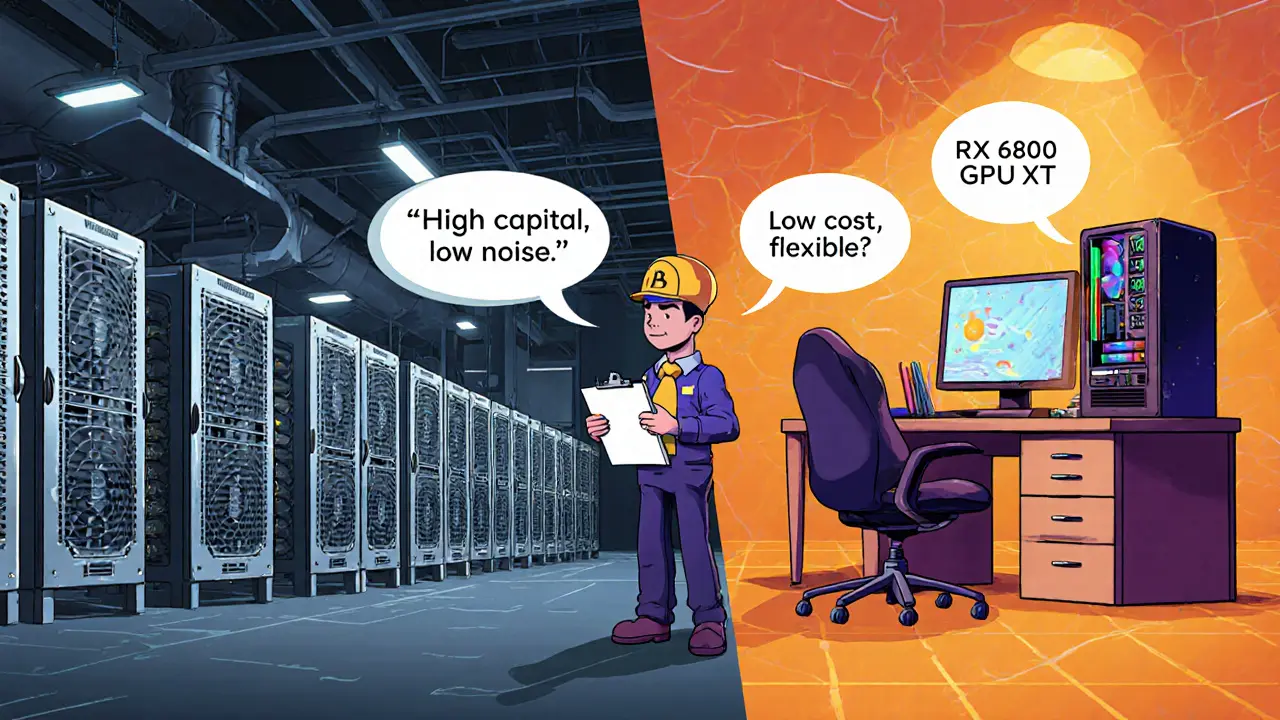GPU Mining: Everything You Need to Know
When working with GPU mining, the process of using graphics cards to solve cryptographic puzzles and earn digital coins. Also known as graphics card mining, it offers a flexible alternative to purpose‑built ASIC rigs and lets hobbyists tap into the crypto economy without massive upfront costs.
GPU mining is a subset of cryptocurrency mining, the broader activity of validating transactions on a blockchain in exchange for newly minted tokens. The speed at which a GPU can process hashes is measured by its hash rate, the number of hash operations performed per second. Higher hash rates generally boost the chance of earning rewards, but they also raise power draw and heat output. Understanding how hash rate, difficulty adjustments, and network competition interact helps you estimate real‑world earnings.
Another key concept is mining profitability, the net gain after subtracting electricity, hardware depreciation, and pool fees from mining rewards. Profitability hinges on three variables: the coin’s market price, the GPU’s efficiency (hashes per watt), and the cost of electricity in your region. Many miners use profitability calculators that factor in current difficulty and block reward schedules to decide whether a GPU setup makes financial sense.
To turn raw hash power into earned tokens, you need reliable mining software. Popular options like PhoenixMiner, Claymore, and NBminer support a range of algorithms (Ethash, KawPow, RandomX) and offer features such as auto‑reboot, fan control, and dev fee settings. Keep the software up to date, as developers frequently release patches that improve stability and adapt to network hard forks. Pairing the right software with the correct driver version can shave off a few percent of your hash rate, which adds up over time.
Hardware choices matter too. While ASICs dominate Bitcoin mining with terahash per second speeds, GPUs still reign for coins that favor memory‑hard algorithms, such as Ethereum (pre‑merge), Ravencoin, and Flux. Modern GPUs like the RTX 3080, RX 6800 XT, and the newer RTX 4090 deliver impressive hash rates while offering better power efficiency than older models. However, you must balance initial cost, resale value, and cooling requirements. A well‑ventilated rig with adequate airflow can prevent throttling, extending the lifespan of expensive cards.
Energy consumption is the silent opponent of most miners. A typical high‑end GPU draws 200‑300 W under load; multiply that by the number of cards, and your electricity bill can surge quickly. Some miners mitigate this by using renewable sources, off‑peak tariffs, or locating rigs in regions with cheap power. Remember, lower electricity rates directly improve GPU mining profitability, making it a critical factor in any long‑term plan.
Below you’ll find a curated collection of articles that dive deeper into each of these topics—from step‑by‑step setup guides and hardware reviews to the latest regulatory news affecting GPU miners. Explore the resources to fine‑tune your rig, stay ahead of network upgrades, and make informed decisions about where to allocate your hash power.
Bitcoin vs Altcoin Mining: Profitability & Technical Guide 2025
A 2025 guide comparing Bitcoin mining and altcoin mining, covering hardware, profitability, costs, risks and strategic tips for miners.





